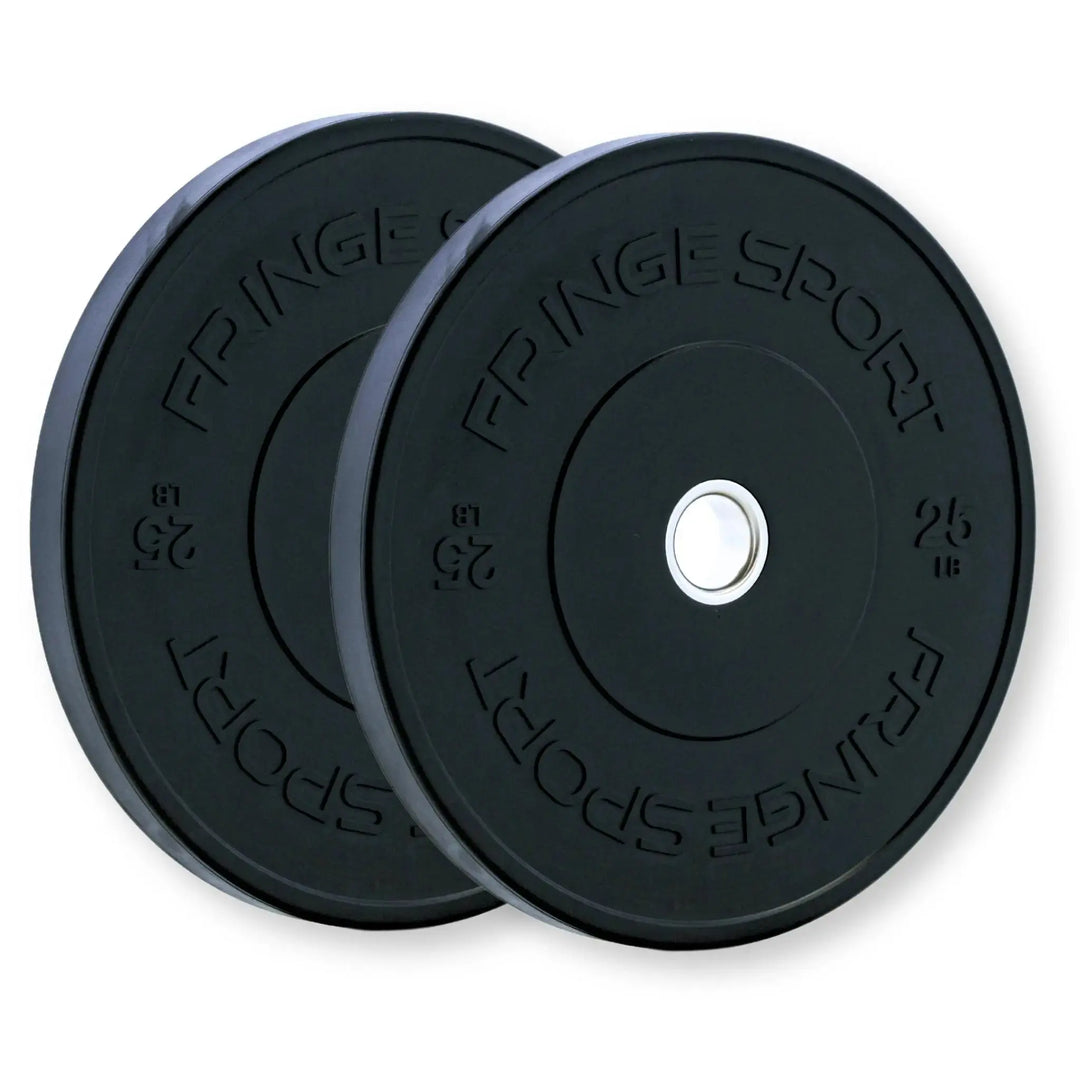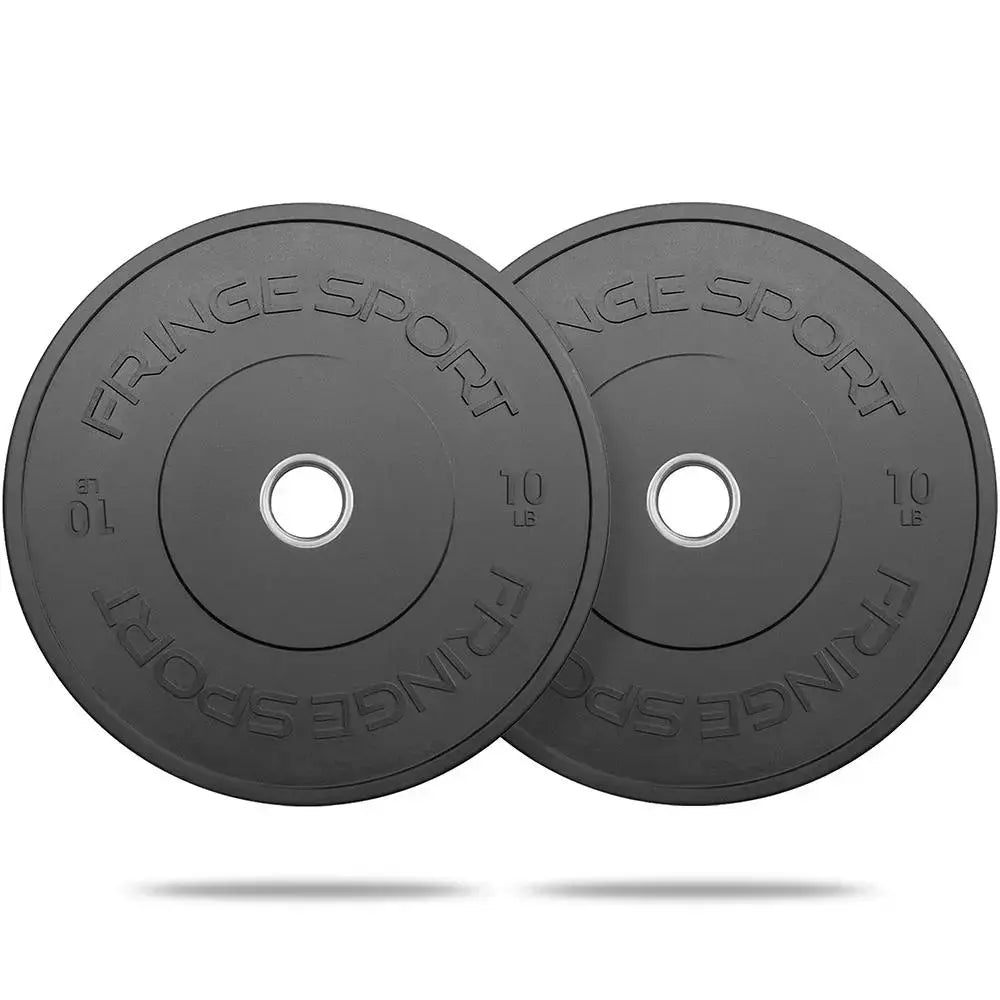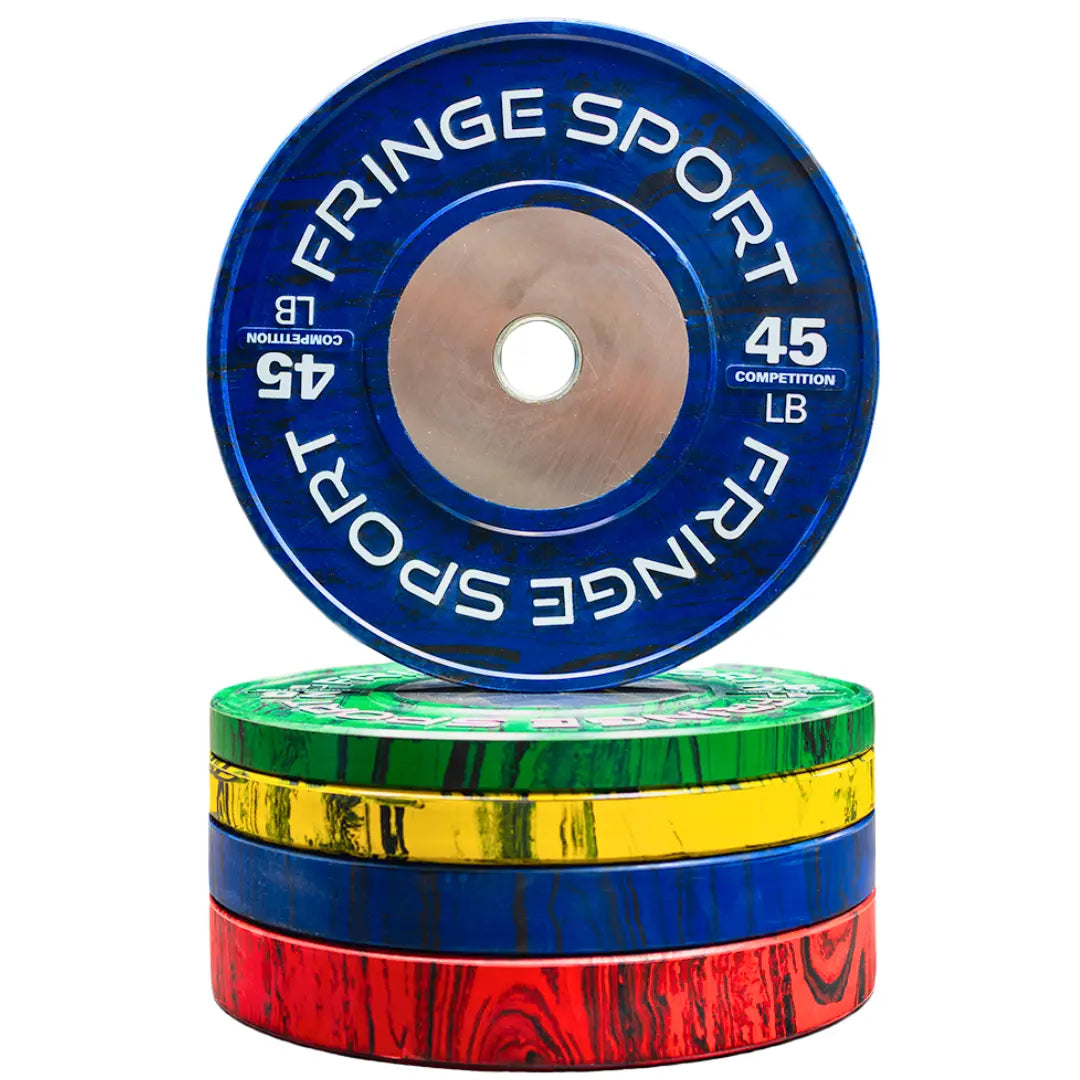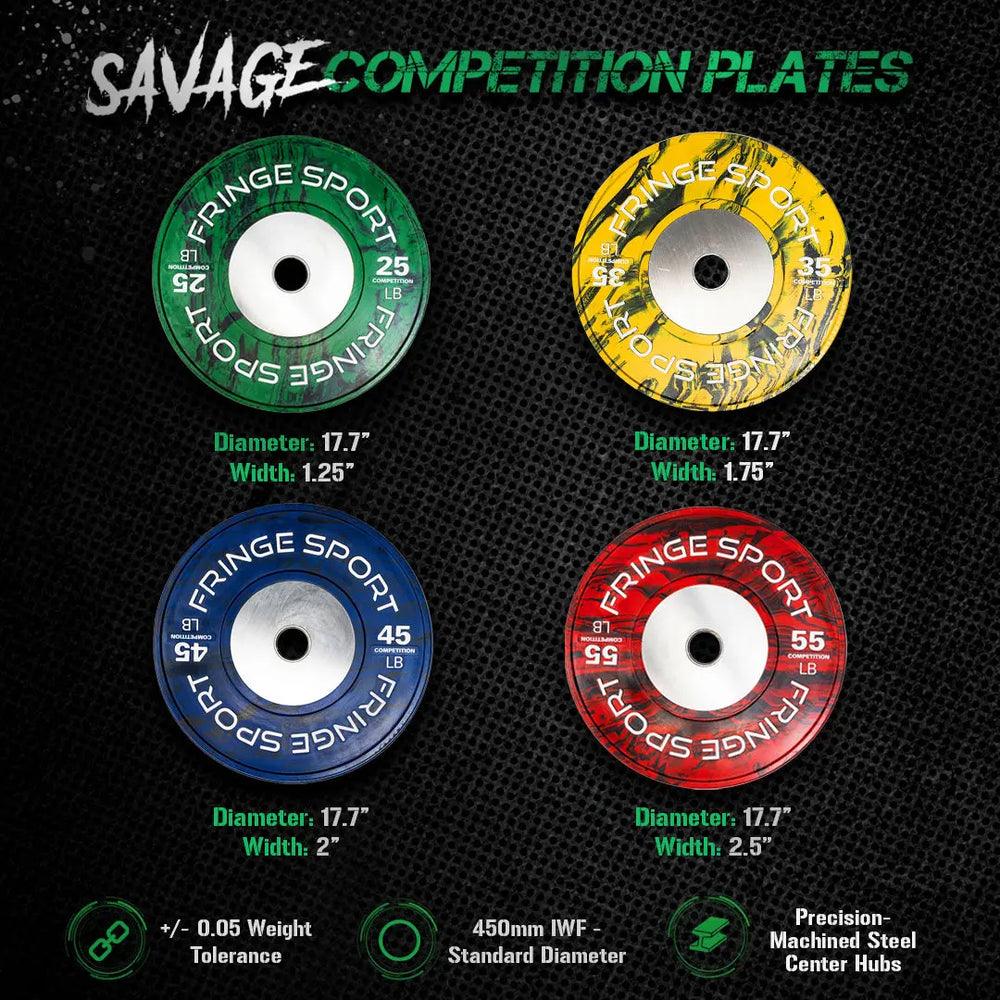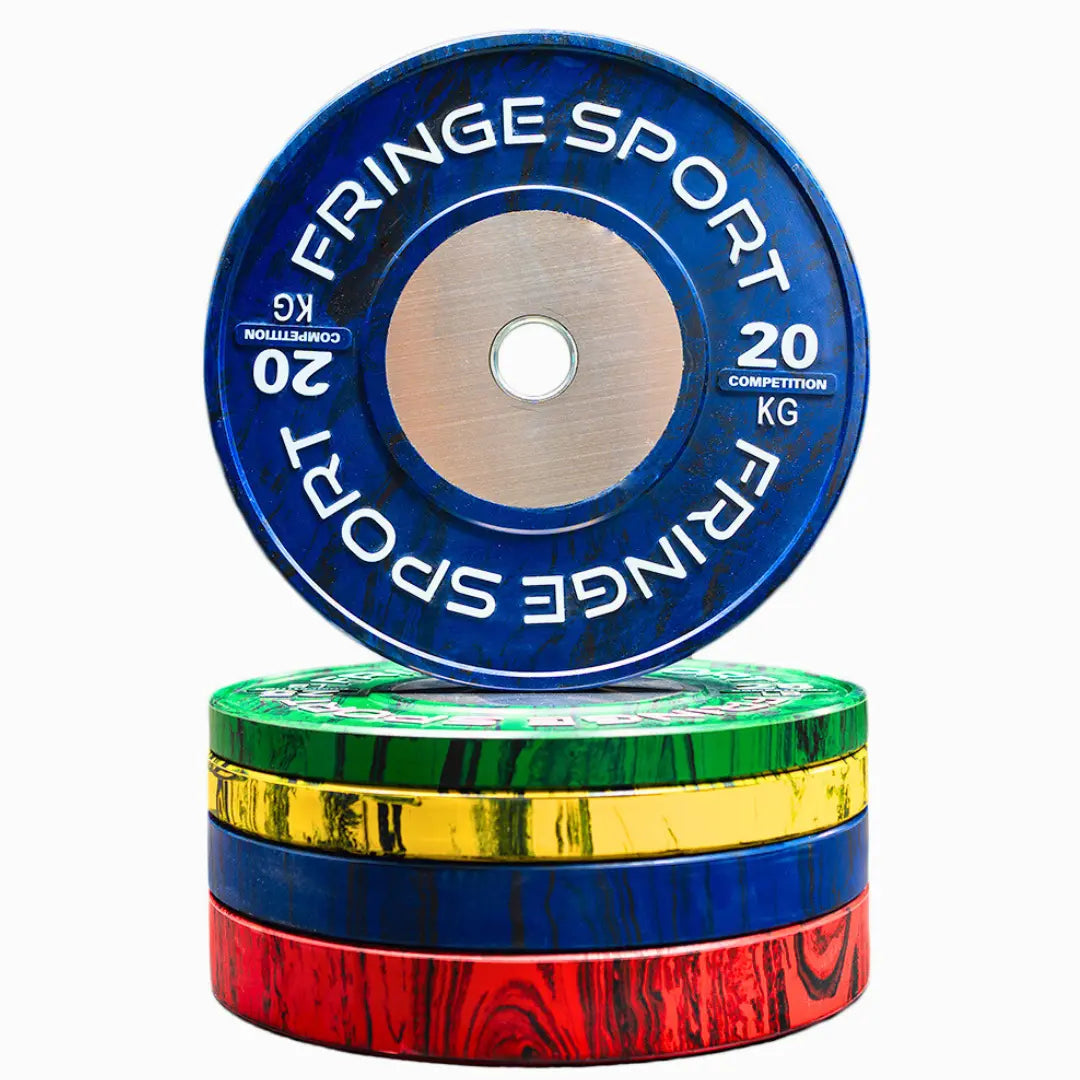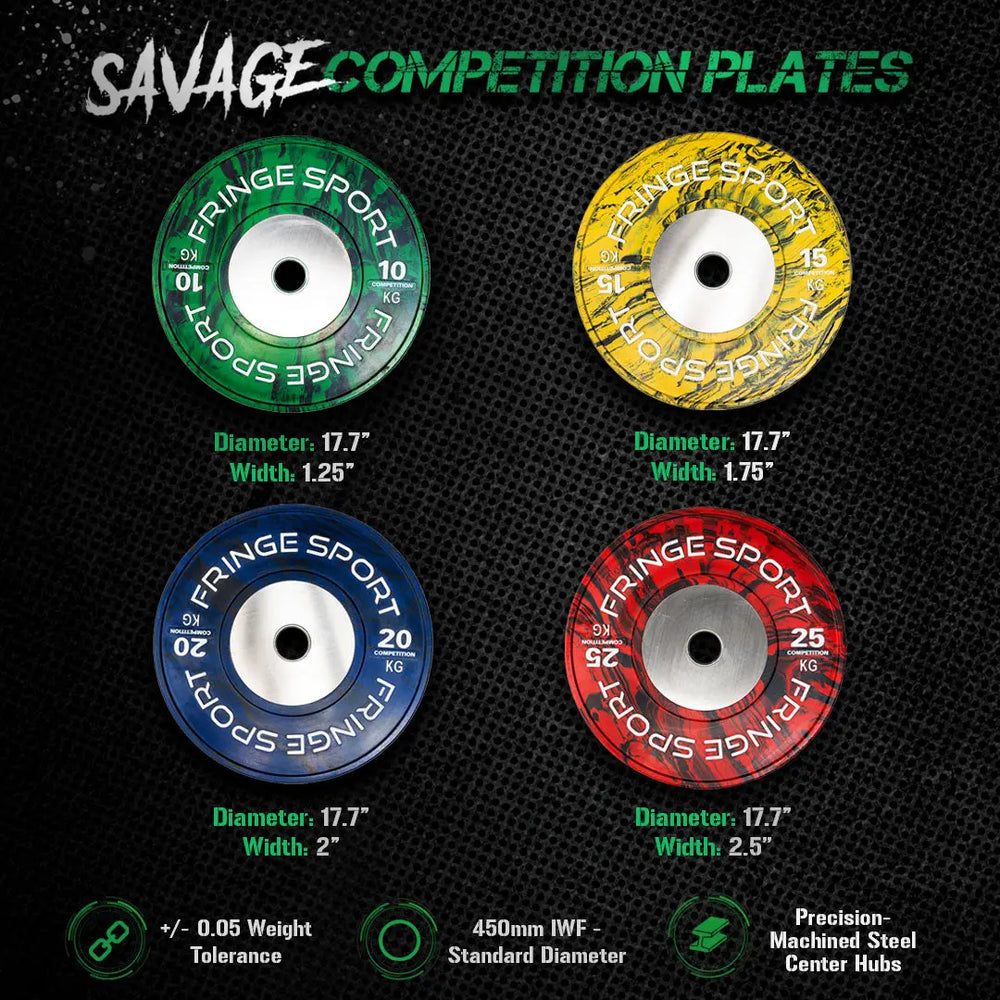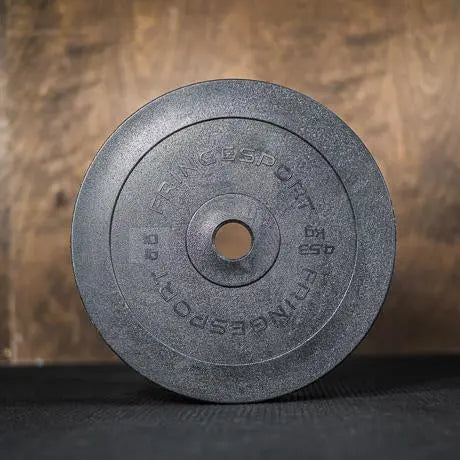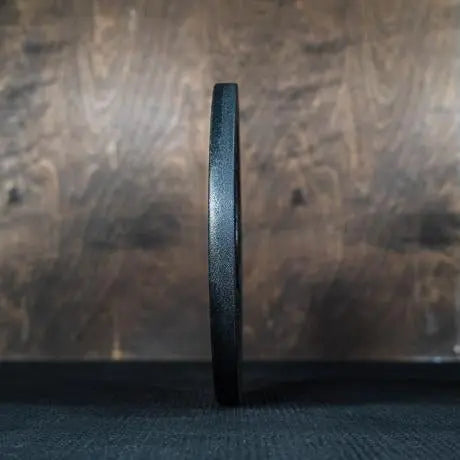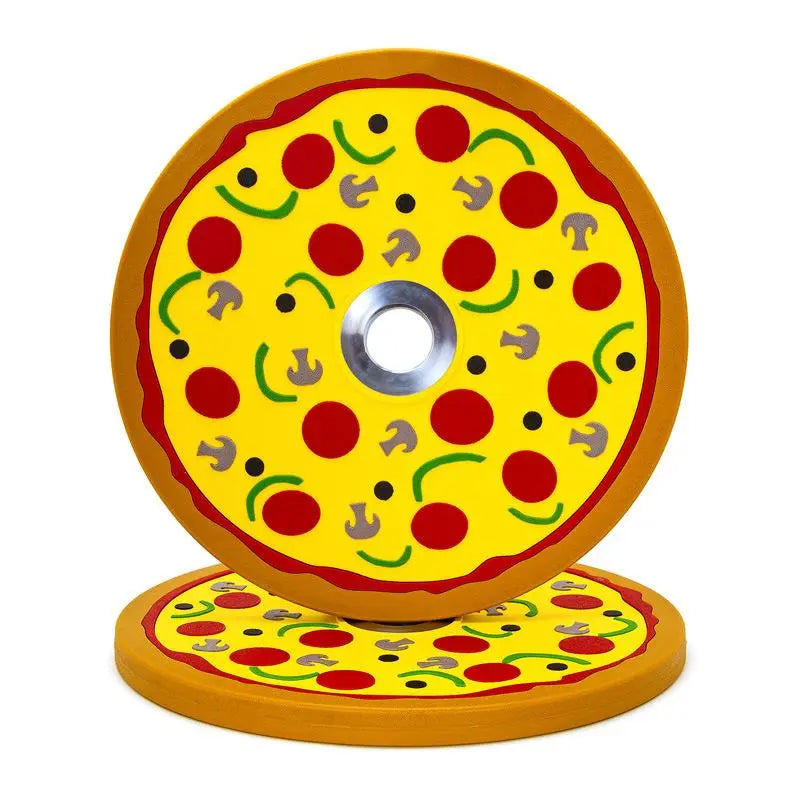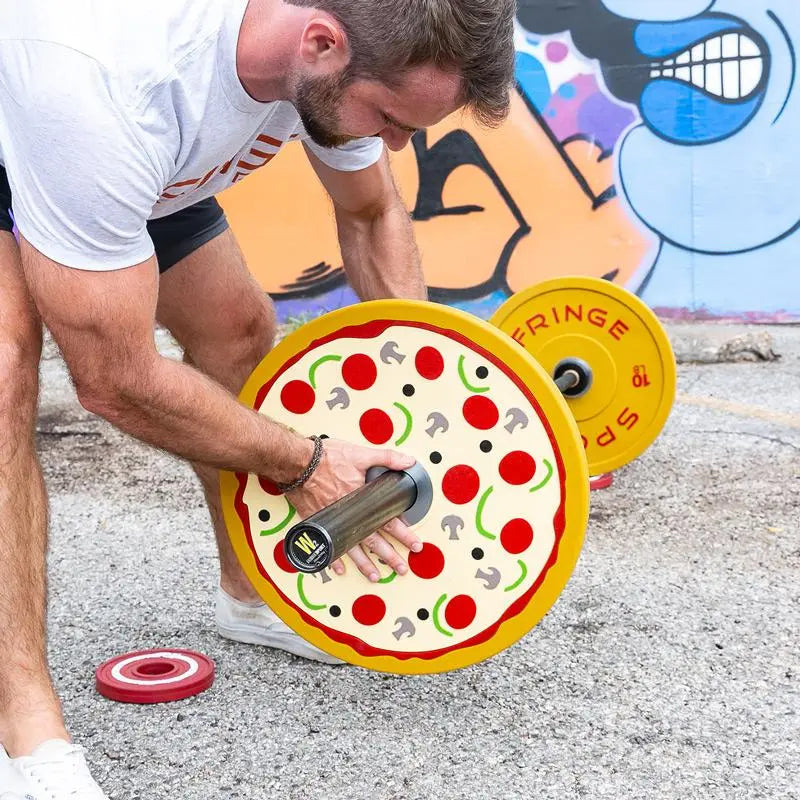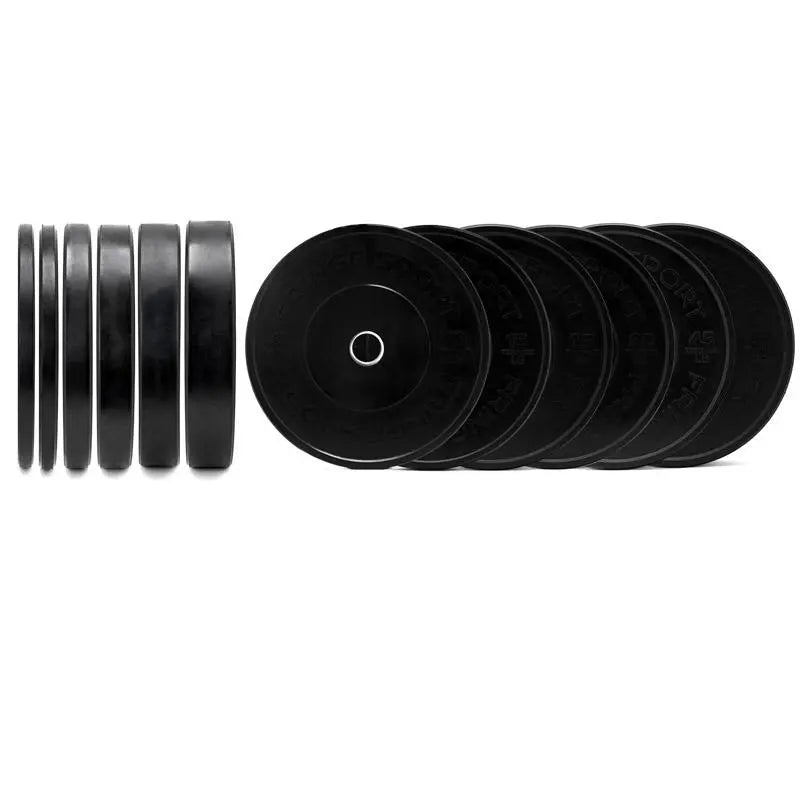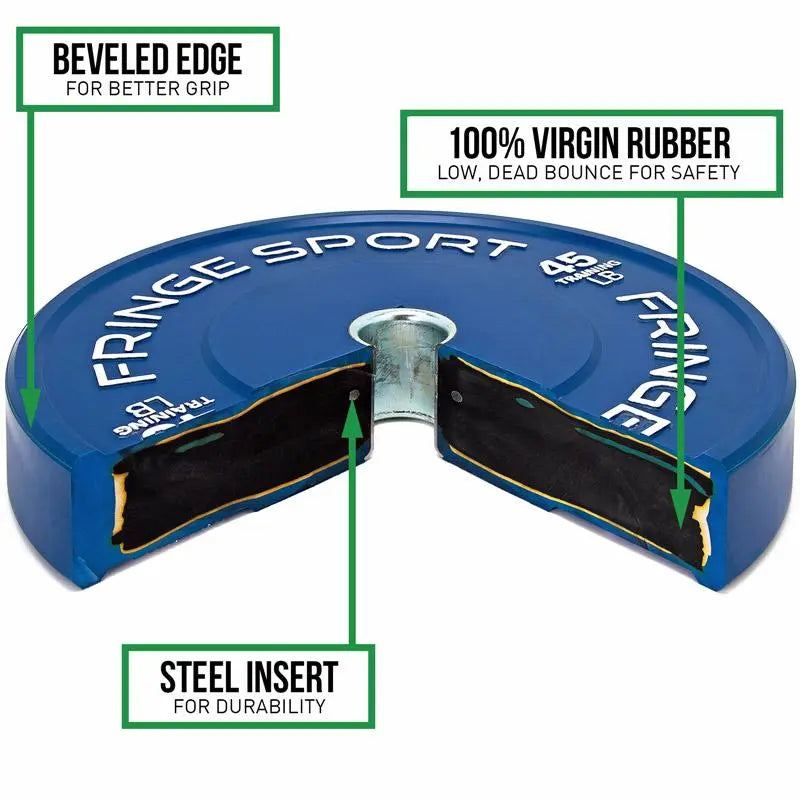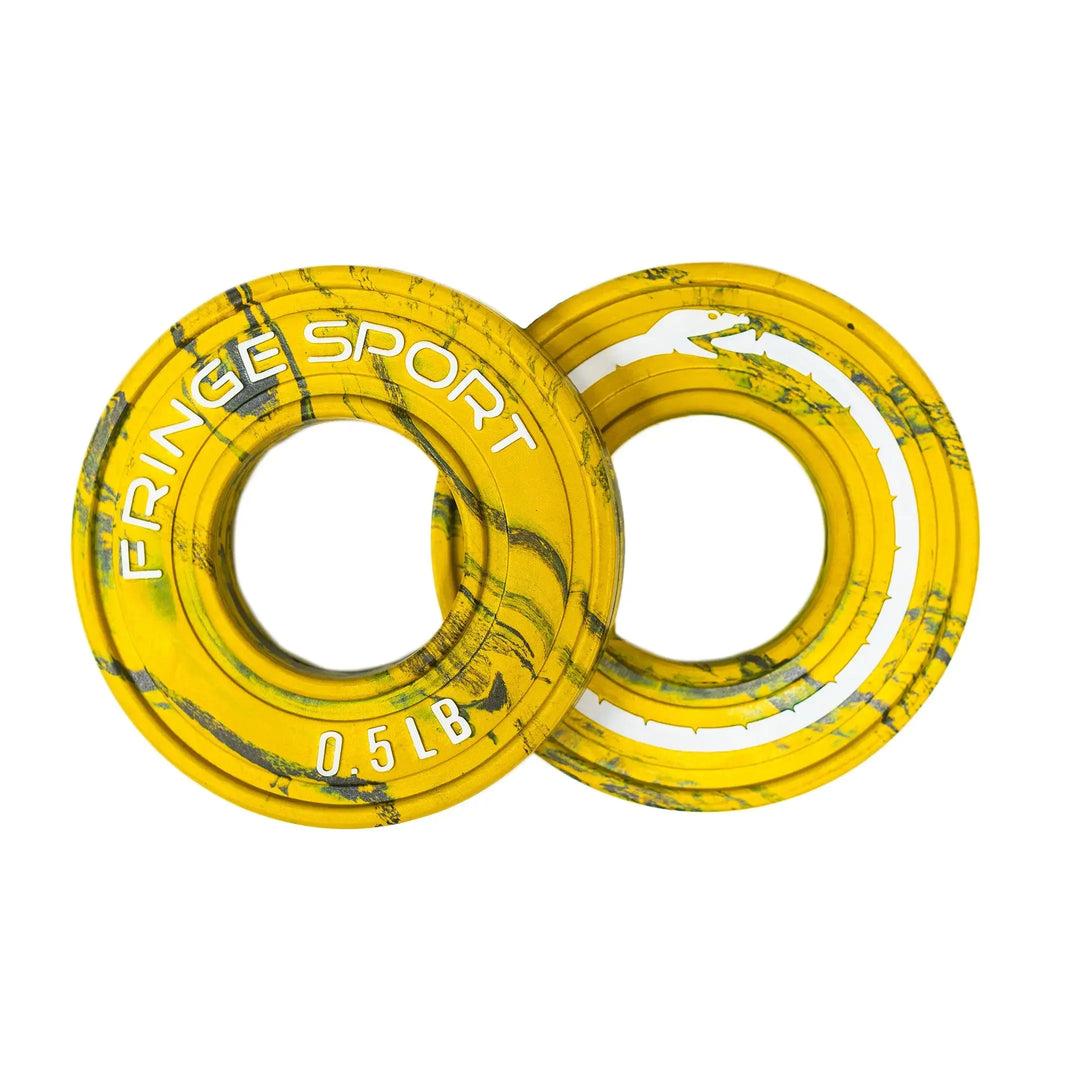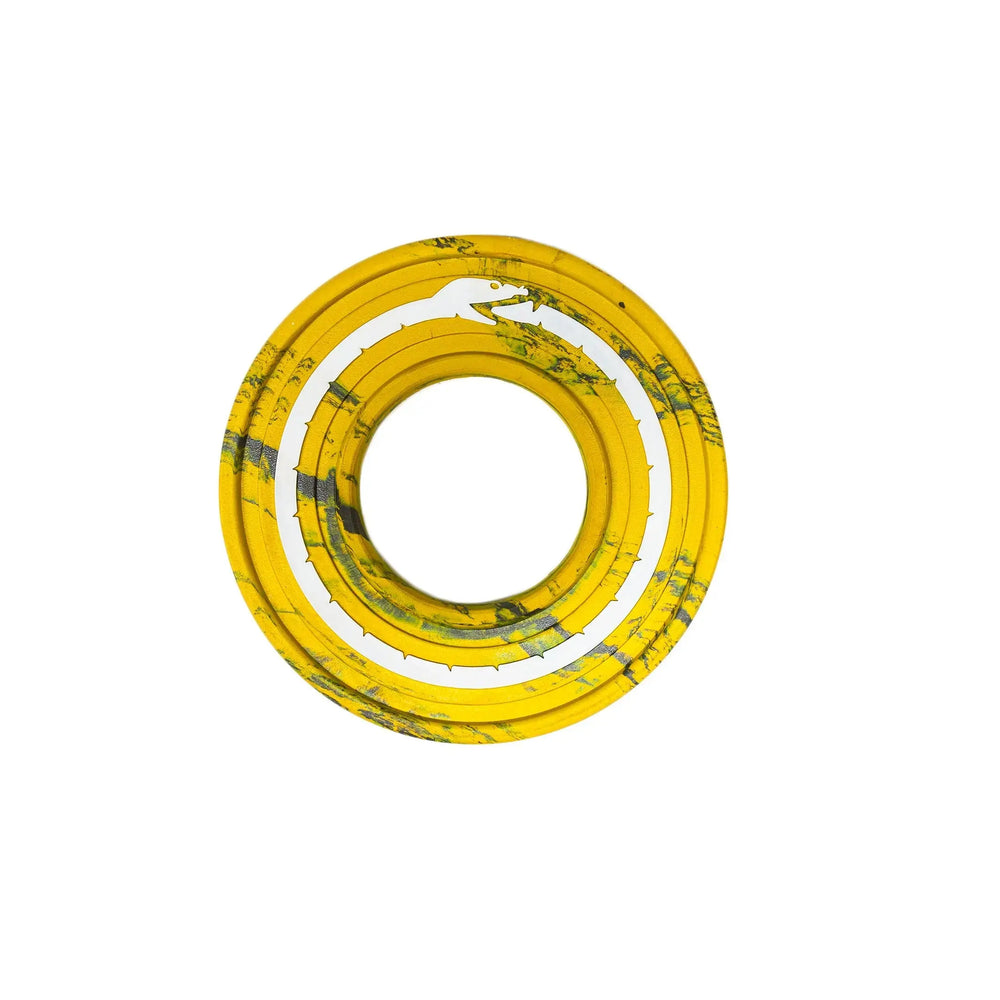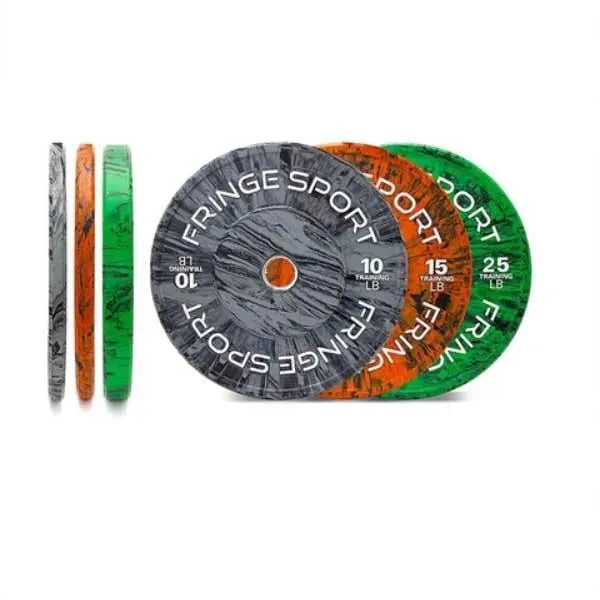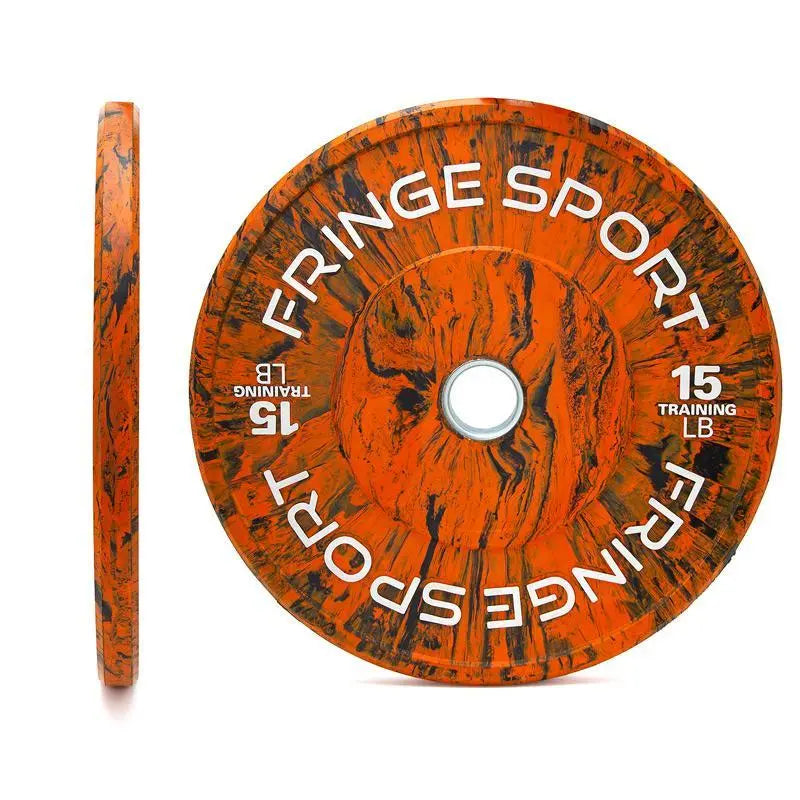BUMPER PLATES: WHAT ARE THEY, AND WHY DO YOU NEED THEM IN YOUR GARAGE GYM?
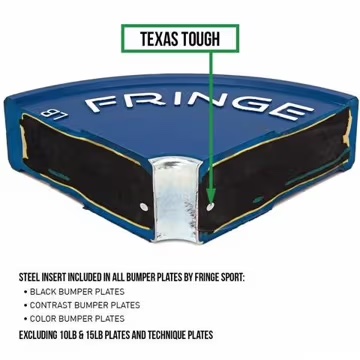
FRINGE SPORT BUMPER PLATES ARE THE MOST DURABLE PLATES ON THE MARKET
Our bumper plates feature extremely durable, low bounce rubber that surrounds the iron in the middle of the plate, and a metal insert that attaches to the ring of the bumper plate. These hooks provide extra surface area to bond the rubber to the steel, creating a much more long-lasting and hardcore bumper plate that’s less likely to break or bend overtime.
They’re for the beginner, the expert, and everyone of every level in between. Our bumper plates were designed with the garage-gymmer, CrossFit box, and community gyms in mind. No matter the kind of fitness you’re doing, these bumper plates are durable and will remain intact. They’re meant to be lifted, slammed, dropped, and beaten on in your pursuit of strength in the Garage Gym Revolution.Durability is important to us, because it means a high-quality bumper plate for you and your lifting. We’ve taken the time to specially design our bumper plates with 100% virgin rubber for a low, dead bounce for your safety and the safety of those (and the walls) around you. This means that when dropped, even from overhead, you won’t be chasing your barbell down the street. It’ll remain in front of you, where it was dropped. Our bumper plates can be dropped from any height time and time again.Our bumper plates feature a beveled edge for easier grip when transporting them from storage to your barbell, and because they’re 100% virgin rubber, they won’t break or bounce very far if dropped.
Brands of Bumper Plates
Buy from our selection of incredibly durable bumper plates for CrossFit, Olympic weightlifting, Powerlifting, and the Garage Gym lifter. Durable long lasting bumper plate sets here.
- Fringe Sport Competition Plates: Level up your bumper plate game with the our Competition Plates. They are available in kilos and pounds. We wanted durable, affordable Olympic bumper plates for training, and that's exactly what these are.
- Fringe Sport American-Made Bumpers: These bumper plates are made in America from recycled rubber. They are a step above your average plate. Their durability is tested in Decatur, AL, going through 30,000 drops during a regular drop test. If you are looking for a recycled rubber plate, this is one that will not disappoint.
- VTX: Troy VTX econ bumpers are considered some of the best in the industry- combining great quality bumpers with an unbeatable price. On top of that, a 1 year warranty against breakage gives each user peace of mind. Pair that high quality manufacturing with Fringe Sport's unbeatable service, and you get a one of a kind deal. Don't be fooled by the low price- these VTX bumper plates are used by affiliates throughout the US- and they are known for their high quality, low bounce, and outstanding durability. A great alternative are the Milspec bumper plates.
- Hi-Temp: Hi Temp bumpers are constructed using a thick, less dense mix of rubber than many other bumper brands. This rubber mix results in a bumper that is a bit wider than many other brands. This additional width, combined with the forgiving low density of the rubber mix, results in a high-bounce bumper that resists cracking or "taco-ing".
WHAT TO LOOK FOR IN BUMPER PLATES
- Dead Bounce Bumper plates were meant to be dropped, in some cases (particularly after a PR) possibly even slammed. The rubber consistency of bumper plates is designed to withstand making forceful contact with the ground, but at different levels and in different ways. Dead-bounce bumper plates describe exactly what it sounds like, very little to no bounce off of the floor after being dropped. This is important because the less bouncing your plates do, the less bouncing your barbell will do, which will save your barbell collars and the center rings of the bumper plates from getting loose.
- Center Ring The center rings on the bumper plate (what you slide your barbell collar through), can vary from manufacturer to manufacturer as far as the amount of indentation they have compared to the rest of the plate (some bumper plates have rings that are flush with the plate which results in metal on metal contact when loading multiple plates and expedites the wear and tear process, while others are flanged to prevent metal on metal contact as well as make it easier to load the plates on the bar.) The way the rings are set into the plate can also differ which can be a determining factor in the life expectancy of the plate. When the rings become loose and fall out from multiple impacts with the ground and/or rattling on the barbell, the plate is pretty much dead as there is now way to set the rings back in. You want to find a bumper plate that has not only properly flanged center rings, but also a manufacturing process that sets the rings into the rubber plates as best as possible (which can be done with using rebar, glues, and several types of different bonding rubbers).
- Thickness The nice thing about metal plates is that you can load hundreds of pounds on each side without worrying about running out of room. The story is the complete opposite with most bumper plates. Since bumpers have to be able to withstand impact with the floor, and because they are made out of rubber, they are naturally thicker and take up more surface area on the bar, resulting in less loadable weight. Still, some manufacturers take this into account and purposefully make their heavier plates with the least amount of surface area possible to allow for more weight on the bar. With lighter plates you want to actually look for more surface area (especially on 10 and 15lb bumpers) to insure that they won’t “taco” or fold over when dropped.
Why Invest in Color Bumper Plates
- Training to Compete There is something to be said for practicing like you play, and in that sense when you lift on colored bumpers you feel like a real weightlifter and in some way it gives you even more purpose during training.
- Knowing Weight Conversions Knowing weight conversions of plates via colors is invaluable when training with other weightlifters at different gyms or in training halls at competitions. Especially if you are training primarily at a CrossFit box where everything is in pounds, if you can use colored bumpers then at least you will know that when you grab a blue bumper plate, whether its 45lbs or 20kgs, the weight will be about the same.
- Look Like a Badass / Feel Like a Badass Colored plates look cool. When you watch any of the top lifters at national or world meets, or bigger CrossFit events - everyone is lifting or working out on colored bumpers. Kind of like wearing the same shoes as your favorite athletes, training on colored bumper plates brings you one step closer to being and feeling elite.


Related Blog Articles
WHAT ARE COMPETITION BUMPER PLATES AND HOW DO THEY DIFFER FROM NORMAL BUMPERS?
Competition bumper plates are actually some of the oldest types of bumper plates. Originally bumper plates were developed for Olympic Weightlifters to compete in local, national, and yes, international competitions like the Olympics. This is the origin of the name- Olympic Weightlifting. When an Olympic Weightlifter executes a lift, the end of the lift is above the Weightlifter's head. From there, the barbell and the weights need to return to the ground. For heavy lifts, it can be dangerous to lower the weight to the ground manually, and it also "wastes" the Weightlifter's energy. Remember, we are talking about competitions here- there is no prize for "most gracefully returning the weight to the ground after a successful lift." So in the early days of Olympic Weightlifting, several solutions were attempted to try and solve this problem. The winning solution was to create competition bumper plates- plates that were made of steel and rubber and were designed to be dropped from overheard. Initially, these competition bumper plates were created in only 10kg, 15hg, 20kg, and 25kg sizes. The lighter weight plates were not durable enough and more traditional style weight plates were used for these lighter weights. As Olympic Weightlifting became more common in the US, many companies began creating these competition bumper plates in pound szies as well as the traditional kilogram sizes.
DOES FRINGE SPORT CARRY THE CHEAPEST BUMPER PLATES?
We carry the cheapest bumper plates that you would want to buy.
In other words, if you look hard, you can probably find cheaper bumper plates... but then you've got to lift with them. We've been in business over a decade, and in that time, we've made our reputation on having the best, most durable bumper plates in the world.
But aren't all bumper plates the same? They sure look pretty similar!
All bumper plates are NOT the same. That's kind of like saying that a Hyundai and a Ferrari are the same- since they are both cars and you can order them each in red.
In the same way, even though many bumper plates LOOK the same, what's inside is different.
Let's start with the rubber. We use pure, innocent, virgin rubber for all of our bumper plates. What this means is:
- Our plates don't stink, and
- Because we precisely control the rubber that goes into the plates, the end result is the most durable, bumper plate with a weight that precisely matches what it is supposed to. Did you know that some brands have weights that are off by as much as 3 pounds for a 45 pound plate? Imagine squatting and one plate weighs 42 pounds while the plate on the other side of the bar weighs 48 pounds. You'd be pretty lopsided, and it could even be dangerous.
So if you're looking for cheap bumper plates, look no further than Fringe Sport. Because if you're looking for a "great deal on a piece of crap," well, we're not your supplier. That's why Fringe Sport is the best place to buy bumper plates. And if you're looking for bumper plates near me- great news! We ship all over the lower 48 United States.
What is the difference between bumper plates & metal plates?
The main difference between bumper plates and metal weight plates is the material they are made from. Bumper plates are usually constructed from a rubber or synthetic material, while weight plates are typically made from cast iron. This difference in material creates a few key distinctions in how each plate can be used.
Bumper plates are designed for Olympic-style lifting, such as clean and jerk or snatch lifts. The soft material helps protect the barbell and floor from damaging drops that would occur if metal weight plates were used. Additionally, their more pliable design helps them absorb some shock when tossed about and dropped during a workout, which makes them safer for users to use with heavier weights.










